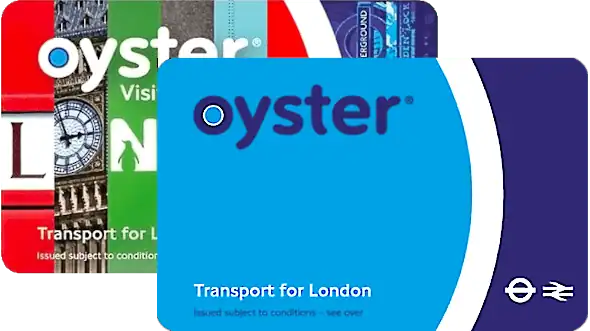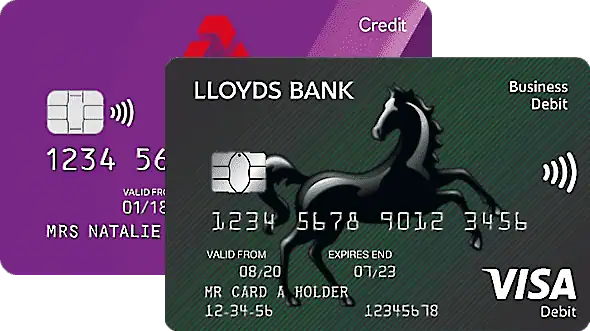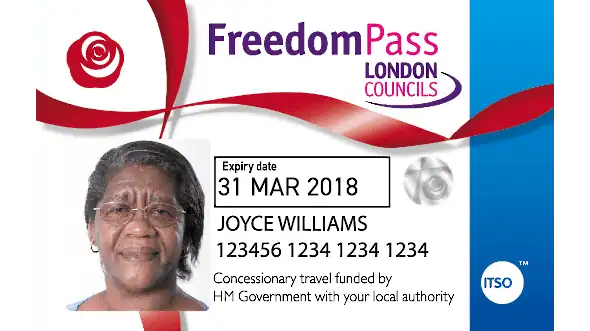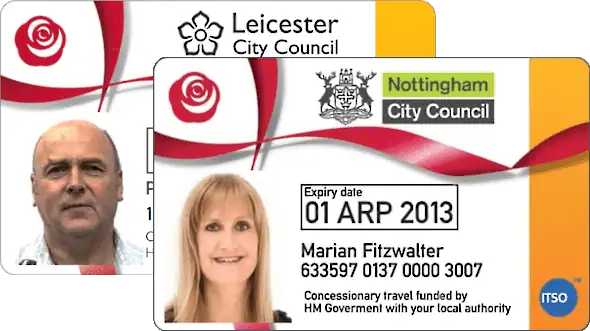| Fare zone | Oyster & Contactless cards | Travelcard | ||||||
|---|---|---|---|---|---|---|---|---|
| Single fare | Daily cap | Weekly cap | One day travelcard | Weekly travelcard | Monthly travelcard | Annual travelcard | ||
| Anytime | Off-peak | |||||||
| All zones (bus/tram only) | £1.75 | £5.25 | £24.70 | £6 | £24.70 | £94.90 | £988 | |
| All zones (bus) + 1-2 (tram/train) | n/a | n/a | n/a | £44.70 | £171.70 | £1788 | ||
| All zones (bus) + 1-4 (tram/train) | n/a | £16.60 | n/a | £64.20 | £246.60 | £2568 | ||
| All zones (bus) + 1-6 (tram/train) | n/a | £23.60 | £16.60 | £81.60 | £313.40 | £3264 | ||
| All zones (bus) + 1-9 (tram/train) | n/a | £29.80 | £17.80 | £116.40 | £447 | £4656 | ||
| See our senior citizen bus fares and child bus fares page for the child prices Note: Bus prices are correct as of | ||||||||

- Benefits
- Joint cheapest fares for single journeys
- The daily cap is cheaper than a one day travelcard
- You get a free journey if you board another bus within 1 hour
- It’s ‘auto top-up’ feature means you don’t have to keep adding credit
- Visitor Oyster cards come with a book of discount vouchers
- Your unused credit never expires
- If you lose your card the remaining credit can be transferred onto a replacement card
- Downsides
- You can’t pay two fares with one Oyster card, so each person will need their own
- You have to pay an extra £7 deposit when you buy a new card

- Benefits
- It’s just your normal bank card, so you should already have one
- Joint cheapest fares for single journeys
- The daily cap is cheaper than a 1-day travelcard
- You get a free journey if you board another bus within 1 hour
- Unlike Oyster there’s no need to keep topping it up
- It works with Mobile Pay on your phone
- Downsides
- You can’t pay two contactless fares with one card, so each person needs their own
- There are no contactless fares for children
- Unlike the dates on a weekly travelcard, the weekly cap has to run from Mon-Sun
- Foreign cards might have a transaction fee added every time you buy a ticket

- Benefits
- They’re easy to understand, you just pay once and you can make unlimited journeys during the dates
- Depending on what journeys you make, a weekly travelcard might be cheaper than the contactless and Oyster weekly cap
- Unlike Oyster, you don’t have to pay a £7 deposit
- Downsides
- You can’t share a travelcard, so each person will need their own
- One day travelcards are always more expensive than the Oyster and contactless daily cap
- Bus/tram travelcards are valid in all tram zones, but train/bus/tram travelcards are only valid in the tram zones you buy them for
- If you lose it then you can’t get your money back
Can you use cash on a bus?
No. It is not possible to pay with cash on a London bus. The only way to pay for a single bus ticket nowadays is with a contactless card, Oyster card (or Visitor Oyster card), or a travelcard – all of which have to be obtained before you board the bus (bus drivers don’t sell any tickets).
How much is a return fare on the bus?
There’s no such thing as a return fare on a London bus. If you travel both ways then you just pay two single fares.
How do you get a free Hopper fare?
You can get a free Hopper fare by using an Oyster card or contactless card, and boarding a second bus within sixty minutes of the first one.
Bear in mind that the sixty minutes begins as soon as you board the first bus – not when you get off. That’s because you only have to tap your card down when you enter the bus – the computer hasn’t got the faintest idea when you get off. So if you board your first bus at 10 AM and disembark at 10.30 AM, you’ll need to board the second one by 10.59 AM to get it for free.
Note: Bus Hopper fares only apply to adults, not children, and you have to remember to use exactly the same card each time (using a bank card the first time, and the same bank card attached to a mobile phone won’t work – you’d have to use the actual bank card both times).
In the early days of the Hopper fare there used to be a rule that you couldn’t squeeze in a train journey between your two bus journeys, but that rule was scrapped in 2018.
What is the daily and weekly cap?
Daily price cap – Oyster bus fares and contactless bus fares have a daily price cap which limits the maximum amount of money that you’ll be charged each day.
It doesn’t matter how many London buses you board during each 24-hour period, the total amount of money that the computer will take from your card will never exceed the daily cap. And the daily cap will always cheaper than the cost of a one day travelcard.
Bear in mind that you have to stick with the buses all day. If you use a mixture of buses and trains (or just the trains on their own) then you’ll have to pay the train daily cap instead, which is more expensive (see our London Underground fares page).
Weekly price cap – The weekly cap limits the maximum amount of money that you’ll be charged each week to the same cost as a weekly travelcard.
Unfortunately it only applies from Monday to Sunday, and not to any other stretch of seven days (like Wednesday to Tuesday, for example), so if your week starts on another day then you’ll probably be better off buying a 7 day travelcard instead.
Do children get cheap fares on the bus?
Children under the age of 11 can travel for free on London’s buses without a ticket. Children aged between 11-17 can get a discount if they have the right travelcard or photocard. See our child fares page for more details.
Do seniors travel for free on the bus?
Senior citizens from abroad aren’t eligible for free or discounted travel on a London bus, but senior citizens from the UK have two ways to get cheaper fares:

60+ London Oyster photocard – If you live in a London borough and you’re aged 60 and over then you can apply for a 60+ Oyster Card. This allows you to travel for free on TFL buses outside of the morning peak period (4.30 AM to 9 AM, Monday to Friday), plus the trams, tubes, London Overground, TFL Rail and some National Rail trains (usually after 9.30 AM on weekdays and any time during the weekend).
You can apply for a 60+ Oyster photocard online at tfl.gov.uk/fares/free-and-discounted-travel.
Note: Once you’re old enough to qualify for a Freedom Pass then you’ll have to get one of them instead.

Freedom Pass – If your principal home is in London and you’re old enough to receive a woman’s state pension (regardless of whether you’re a man or a woman), or you have an eligible disability, then you can get hold of a Freedom Pass.
A Freedom Pass entitles you to travel for free on TFL buses outside of the morning peak period (4.30 AM to 9 AM, Monday to Friday). You can also travel on the trams, London Underground, London Overground, TFL Rail, and some National Rail trains within London (usually after 9.30 AM on weekdays or at any time during the weekend, but check with the train company).
Freedom Passes are supplied by your local council and you will need to fill in an application form and provide a passport-sized photo to get one. Check their website for details: londoncouncils.gov.uk.
Can you use a senior pass on a London bus?

If your senior bus pass was issued by a non-London council then you can benefit from the English National Concessionary Bus Travel Scheme – but only if it has a red rose symbol on it (visible in the accompanying photo).
These allow you to travel for free on any bus carrying the TFL bus symbol:
If the bus doesn’t carry the TFL symbol then you should check with the driver first. (They might still allow you to use it, but you might have to travel at certain times of day, like after 9:30 AM.)
Unfortunately you can’t use your OAP bus pass on the train – only the buses.
What’s the cheapest way to travel on a London bus?
The cheapest bus fares are always with Oyster and contactless – but bear in mind that you also have to pay a £7 deposit the first time you buy an Oyster card, so unless you already own one then contactless is probably the better option.
The daily cap on Oyster and contactless is always cheaper than buying a 1 day travelcard, and the weekly cap is always the same price as a weekly travelcard. But the weekly cap on Oyster and contactless only applies from Monday to Sunday, and not to any other combination of days (like Wednesday to Tuesday, for example), so if you’re not travelling between Mon-Sun and make two or more journeys on each of the seven days, or three or more journeys on six days, then a weekly travelcard will likely work out cheaper.
How many stops can you travel on one fare?
London buses use a flat fare. It doesn’t matter whether you travel one stop or fifty stops, you always pay exactly the same fare. But your journey ends as soon as you get off the bus. If you board another one straight after then you’ll have to pay another fare (unless you get a free Hopper fare).
Note: It’s not possible to stay on the same bus all day, because as soon as it reaches the end of the line any remaining passengers will be told to get off so the driver can take a break. If you board the same bus when he starts up again then you’ll have to pay another fare.
Do you have to pay twice if you change buses?
Each bus journey is charged separately. It’s not possible to buy one bus ticket that covers multiple buses. But if you board the second bus within sixty minutes of the first one then you can benefit from a free Hopper fare.
What is ‘One More Journey’ with Oyster?
One of the benefits of using an Oyster card on a London bus is that you can get ‘one more journey’ if you don’t have enough credit to pay the fare. But you do need some credit on the card (it can’t be totally empty). The computer will simply take whatever’s left and leave you with a negative balance. You won’t be able to use the card again until you’ve topped it up and cleared the negative balance.
How do you use Oyster and contactless on the bus?

All you have to do is wave your contactless card or Oyster card in front of the big round yellow reader by the front door.
Some of the modern buses also have a reader by the middle door and back door, and you’ll see lots of people boarding the bus through them as well, but if you’re a newbie to London then we always recommend boarding it by the front door because that will always have a reader (if you try and board through a door that doesn’t have a reader then people might think you’re trying to dodge your bus fare).
If the card registered correctly then you should hear a beep and see a little green light by the reader. If it didn’t work then try holding it flush against the reader.
There’s no need to touch the card down again when you leave the bus – you only have to do that for trains.
How do you use a travelcard on the bus?
If you have a paper travelcard then all you have to do is board the bus through the front door and show it to the driver behind the glass. He will then nod you through.
If your travelcard has been loaded onto an Oyster card then just touch it against the big round yellow reader.
There’s no need to touch your Oyster travelcard down again when you leave the bus – you only have to do that for trains.
Which is best: Contactless, Oyster or travelcard?

Lots of visitors to London assume that a one day travelcard is the cheapest option, but the contactless and Oyster daily cap is quite a bit cheaper. However… you should bear in mind that you also have to pay a £7 deposit to get a new Oyster card if you don’t already have one, so contactless might be the best option. (We don’t recommend contactless for overseas visitors because your bank might add on a transaction fee every time you use it abroad, which will likely apply to each individual bus ticket.)
That Oyster deposit will also wipe out any savings you make if you’re only here for one day, so if you’re on a day trip then we recommend getting a 1-day travelcard instead.
If you’re visiting for between two and five days then contactless and Oyster are better value.
If you’re here for six or seven days and you’re planning on making three or more journeys on six days, or two or more journeys on seven days, then a weekly travelcard will work out cheaper if you’re not starting on Monday. (That’s because the weekly cap for contactless and Oyster is identical to the cost of a weekly travelcard, but it only applies from Monday to Sunday, whereas a travelcard can start on any day you like.)
The verdict: Contactless is always the best option for UK visitors. A one day travelcard is the best option for foreign tourists staying for just one day, and Oyster is the best option for tourists staying for more than one day. A weekly travelcard might be the cheapest option for a stay of 6-7 days, as long as it doesn’t start on Monday.
 Twitter
Twitter Facebook
Facebook Bluesky
Bluesky WhatsApp
WhatsApp Email
Email
